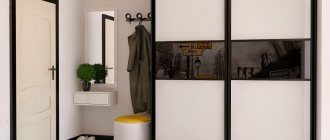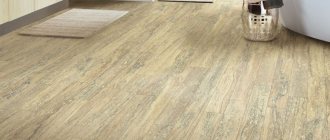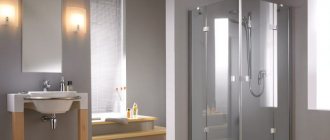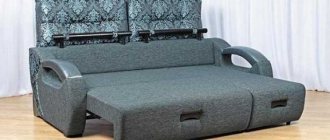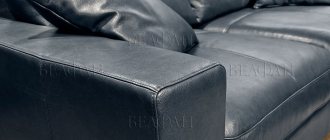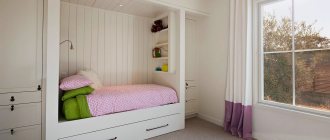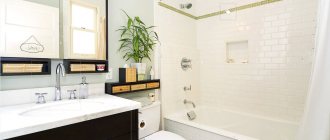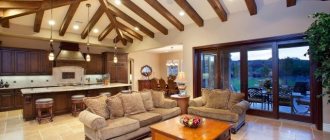Making a winter garden in an apartment yourself is not so easy. But it's worth a try. Plants will improve indoor air and improve people's mood. It is especially pleasant to admire them in the cold season, when there are snowdrifts outside the window, but summer still reigns in the apartment and the home greenhouse pleases with bright natural colors.
Main characteristics and features
A winter garden is a complex system that includes a lot of engineering and technological solutions. The design allows you to create an optimal microclimate for a variety of plants and provide proper care for them. In addition, a “green” room in an apartment or country house can become a place for a comfortable pastime, rest and relaxation.
Basic material for construction
Glass has high transmittance and load-bearing capacity. Almost 100% of sunlight will enter the winter garden.
To decorate a winter garden, you can use any type of glass: colored, impact-resistant, tempered, and so on. Among the disadvantages of the material are its fragility and high cost.
Polycarbonate is a durable and lightweight material that perfectly retains heat in a room. When choosing polycarbonate as the main material for decorating a winter garden, you can save a lot.
Kinds
There are different types of winter gardens, which differ fundamentally in purpose and design. Before you start implementing your idea, you need to decide which of the existing options you want to get as a result. The most popular versions are:
- residential;
- greenhouse;
- buffer.
Residential
A winter garden, arranged in a heated room, is called residential. It creates a microclimate that is equally comfortable for both plants and the inhabitants of the house. It contains a sufficient number of flora representatives that can be cultivated year-round. Most often, such a winter garden becomes an extension of the home and is used as a living room, dining room, billiards or office. Plants here are traditionally placed in pots or flowerpots. A convenient option is mobile structures that allow you to change the location of plantings depending on the degree of their love for the sun, the characteristic conditions of care and design features.
Greenhouse
A greenhouse is a type of winter garden that is used only for growing plants and is not part of the living space. This is an unheated structure in which an ideal microclimate has been created for a wide variety of species, including exotic ones. Plants and soil are heated by infrared radiation from the sun, which penetrates through the glass roof and walls. Flowers, vegetables, and fruits are often cultivated here. Many plants are transplanted into the ground after warm weather sets in. A greenhouse is an indispensable structure for amateur gardeners, scientific botanists and agricultural complexes. However, this room cannot be called a rest and relaxation area for the owners.
Buffer
This type of home oasis is an extension to the home that acts as a buffer between the living space and the outdoors. This is a glazed, unheated space. It cannot be used as a residential building, except for the time of year when heating is not required - in the summer months. Panoramic glazing promotes heat accumulation. Thanks to this, a certain temperature is maintained inside the house itself, which allows you to save on heating costs. It is impossible to create a microclimate similar to a greenhouse here. Constantly opening the door does not help maintain it. Therefore, there are not many plants in the buffer garden, but here you can create a wonderful area for relaxation and entertainment, and open windows will allow you to enjoy the view of the surrounding landscape.
Decorative design
Decorative design
According to designers, it is best to divide the winter garden into several separate zones. This approach will improve the functionality of the room. To properly plan the design , three main zones should be provided:
- Decorative. Growing plants and creating general landscape floristic compositions. A pond, fountain, aquarium, decorative forms and compositions can be placed here.
- Recreational. Equipment of living space for relaxation and free time. Furniture is being placed.
- Communicative. There are passages and paths along which you can easily move from one zone to another.
Recreational area
The stylistic direction of the winter garden design depends entirely on the wishes and preferences of the owners. Among the most common styles are classic, Japanese, hi-tech, country and modern.
It is impossible to arrange a spacious winter garden in an apartment. But the owners of dachas, country cottages and private houses can easily create a personal evergreen oasis in which they will enjoy spending time with a cup of tea on a frosty day. The shape and size of the winter garden will depend solely on your own capabilities and imagination.
Winter garden styles
Interior decoration, plants, and decorative content are of great importance for the concept of a winter garden. If you select them thoughtlessly, not in accordance with one style or another, the resulting result is unlikely to please you. Therefore, before you start creating your own green “corner,” you need to decide on its style, create a detailed project, and only then begin arrangement. The winter garden can be designed as an imitation of any natural landscape area or endowed with the features of one of the architectural styles.
Classical
The main feature of the classic style is moderation. The decoration, made in neutral soft tones, will not distract attention. And in a classical garden there is undoubtedly something to see. The rich colors of subtropical plants seem even brighter against the background of snow-white stucco and marble. Typically, such rooms are filled with a variety of arches, columns, and pilasters. In addition to interior solutions, the space is generously decorated with various statues and other works of art - frescoes, paintings. You can use mini fountains and water tanks as additional decorations. And of course, we must not forget about classic furniture and lamps.
Japanese
A Japanese winter garden is a place where you can completely abstract from the surrounding reality and surrender to the process of self-discovery. The philosophy of such a place tends towards minimalism and pronounced symbolism. To create the atmosphere of a Japanese garden, you can choose one of the most common directions:
- kare-sansui - the so-called dry landscape. Such a landscape can hardly be called a garden. Its characters are gravel, sand and stones of various sizes. There are no plants or ponds to be found here. The main purpose of this garden is to provide a space where a person can meditate, calm down and restore spent energy;
- Tsukiyama - known as the hilly garden. It is characterized by the reproduction of any locality in miniature. In this case, a set of dwarf trees will symbolize the forest, a rocky embankment will symbolize the mountains, and a small pond will symbolize the sea;
- tea ceremony garden - allows you to relax and enjoy a cup of green tea among picturesque plants. You should avoid bright colors, which have a stimulating effect on the psyche.
Country
Country style will suit absolutely any garden. The highlight of this place will be the bright and lush flower beds. They can be combined in completely different colors. The attributes of this style include natural lawns and randomly appearing self-sowing plants in the form of wild flowers or those that have voluntarily moved from the garden bed. An integral element of the garden are vegetables, for example, bright and spectacular miniature pumpkins or squash, which successfully replace flowers. It is impossible to imagine a country garden without wooden elements - rough untreated benches, plant boxes, old chairs, nets for vines, gazebos. The reservoirs have a natural appearance - overgrown with water lilies and duckweed; they are often equipped with wooden walkways. You can use old watering cans, irons, wheels and even a rocker as decoration.
English
Nowhere have winter gardens become as popular as in England. It was the British who became the authors of two main types:
- Victorian - the garden is equipped with a 3 or 5-pointed bay window. The roof of this room is a transparent five-slope structure. Glass or transparent polycarbonate is used as a glazing material;
- Edwardian - differs from the previous version in the simplicity of its form - rectangular structures with a regular gable roof.
An English-style winter garden is a place for a pleasant pastime with a cup of tea, conversations and women's handicrafts. The main color combinations are green and cream, pink and white. There are also bright colors - yellow, blue, and the interior is enhanced by details in shades of old gold. In the English greenhouse, special importance is given to the windows - they are decorated with various layouts, stained glass elements, and full-length curtains. A warm floor will make a soft carpet even more comfortable, and aged furniture will allow you to immerse yourself in the atmosphere of antiquity and isolate yourself from the bustle of the modern world.
Mediterranean
The hallmark of a winter garden design in this style is simplicity and clarity of lines. Most often this is a room with a pitched roof adjacent to the house. Therefore, the role of a greenhouse is often played by a veranda or glazed terrace. This is a functional and high-quality room.
The distinctive features of the Mediterranean winter garden are light walls and floors, as if burned out by the burning rays of the sun. Antique statues and ceramic vases can often be found here as decoration. Design elements can include forged benches, tables with glass tops, pergolas braided with climbing roses. Sundials and artificial ponds are also attributes of this style.
Traditional plants for a Mediterranean winter garden are juniper, true palms, citrus, pistachio or olive trees. Flowers: lavender, roses. And, of course, you can’t do without herbs - rosemary, saffron, coriander, basil - integral attributes of this style.
High tech
A high-tech winter garden is a kingdom of glass, shiny metal, plastic and regular geometric shapes. Lighting plays a huge role in such an interior. Glass floor lamps and chrome lamps are installed at different levels, which allows you to use the light as efficiently as possible. Practicality and functionality of each element is what characterizes this style. Comfortable and simple geometric-shaped furniture made of plastic, leatherette, and metal would be appropriate here. Interior items with a metal frame will fit perfectly into the space.
Modern
Expressive lines, laconicism, contrasting combinations, periodically repeating identical motifs are the distinctive features of the Art Nouveau garden. A single symbolic concept can be traced throughout the space. All design elements - crowns, lawns, paths - have smooth and very clear outlines. The expressiveness of the borders is enhanced by the contrast of color combinations - green lawn and gray paving paths, light and shadow. Plants for this garden should have large original leaves and a bizarre pattern of branches. The ornate shape of irises made them an integral element of the Art Nouveau style. Such a garden also cannot do without expressive and graceful peonies and lilies.
Deciding on the design and side
One of the most important stages in the construction of a winter garden in a house is the choice of cardinal direction:
- East. The best option, since the amount of solar radiation will not overheat the transparent structure, which means that the necessary microclimate will be maintained inside.
- West. The peculiarity of this side is the ability to retain the heat that has accumulated during the day for a long time, for example, at night.
- South. This option is also suitable for arranging a winter garden in a country house. It should be remembered: in order to prevent overheating of the room, it is necessary to take care of organizing powerful ventilation and abundant watering. There is another side - in winter, the garden, which is located on the south side, will remain warm for a long time.
- North. A garden located in the north is a bad idea. It will accumulate heat poorly and quickly lose it. If there is no other option, then it is worth considering a high-quality heating system.
When choosing a location for a winter garden, take into account not only the specified characteristics, but also the design of the house itself.
Design options
Also at this stage it is worth familiarizing yourself with the types of designs. They are divided into two large groups:
- adjacent to the house;
- free-standing.
Each option will make its own adjustments to the design and construction process. Do not forget that the shape of the winter garden room can be completely different. The most popular options:
- rectangular extension to the house (the most common form, complemented by a pitched roof);
- rectangular structure with a pitched roof, complemented by a roofing part;
- a winter garden attached to the corner on the outside of the cottage or dacha;
- winter garden attached to the inner corner (quarter-polygon);
- a building with a combined roof, for example, a four-beam one;
- extension on the inside of the corner.
In fact, there are much more design options for buildings, and everyone has the right to make their own changes and adjustments or combine two options into one combined one.
How to properly arrange a winter garden: step-by-step instructions
A professionally equipped winter garden will allow you to welcome summer whenever you return home. Thanks to proven technologies and care, the necessary microclimate will be constantly maintained here. Such a structure will require significant investments. But you can always do without extra expenses if you get down to business yourself. The task of creating a winter garden with your own hands is not an easy one, so you will have to be thoroughly grounded. You will have to familiarize yourself with all the nuances of this complex and time-consuming process.
Choosing a site for building a garden
Before you start designing a room for a winter garden, you need to decide on the location of the building relative to the building. The side on which the structure will be located affects the temperature regime of the future garden and its microclimate.
Pros and cons of placement on each side:
- on the east - the most successful side, it allows you to create the most comfortable conditions for the plants and people located there - with enough light, such a building will not overheat;
- from the south - not a very good position for a garden, especially in summer. Plants will overheat and additional ventilation will be required. On the other hand, in winter such a design will retain heat and save energy;
- from the west, such structures can retain heat for a long time. In summer, this feature can turn into a minus;
- from the north - in such a room heat accumulates poorly and its release accelerates. If this is the only possible option for arranging a green corner, you need to carefully consider its heating.
Wherever the winter garden is located, it should be filled with light, coziness and comfort.
Deciding on the form of construction
The shape of the building depends on the design features of the building, the required size, placement - against a wall or in a corner, and the chosen stylistic direction.
When designing a building, you can choose any of the already known formations. If none of the versions developed by professionals suits you, come up with an original greenhouse model.
Basic design options by shape
- A rectangular structure with a simple pitched roof. The walls and roof must be transparent. This is the most common modification of a winter garden, which is most often attached to the wall of a building.
- Corner building - goes around the outer corner of the house.
- Quarter polygon - the building is built into the corner of the building on the street side.
- A rectangular structure that is mounted in the corner of the house from the inside.
- A room formed by four walls and a gable roof.
- A three- or pentagonal structure with a three- and five-slope roof, respectively. Attached to the wall of the building.
What material to build from?
The design of the winter garden consists of a frame and glazing. The frame is most often made of aluminum. This is a lightweight and durable material that allows you to create a stable structure that is not in danger of collapsing due to its own weight.
The choice of glazing material depends on the purpose of the winter garden, its location relative to the building, and the financial capabilities of the owners. Most often it is glass. In rare cases, transparent polycarbonate is used.
For greenhouses, tempered glass with a thickness of at least 6 mm with high thermal insulation properties is used. In order to prevent windows from fogging, heating is provided. The advantage of tempered glass is its strength and safety. If it does break, it will shatter into small fragments with non-sharp edges.
Double-glazed windows
Today the market offers a variety of double-glazed windows. With their help, you can organize ideal heat and sound insulation, and protect plants on a hot day from scorching rays. Inside, the glass unit is filled with inert gas, which prevents heat from escaping from the room. But this is not the only advantage of this material. Today you can choose glasses supplemented with a variety of useful bonuses. Shockproof, hardened, soundproof, energy-saving, mirrored - there are offers to suit any request.
Pay attention to self-cleaning glass. They are great for roofing. This innovation has remarkable properties - the dirt on it decomposes under the influence of sunlight, and when it rains it is simply washed off.
Polycarbonate
This material perfectly absorbs light and has increased thermal insulation ability compared to glass. Polycarbonate is highly flexible and impact resistant. True, its density is much worse than that of glass. The material can be matte, transparent, darkened or colored. Many color options allow you to successfully fit it into any design. Flexible plastic can be shaped into interesting curved shapes. Light weight can also be attributed to the advantages of the material.
If clear, sunny weather prevails in your area, it makes sense to choose dark polycarbonate. It will block the burning rays and help protect your plants. Just keep in mind that the lack of light will have to be compensated for by additional artificial lighting.
There is cast and cellular polycarbonate. The heat-saving properties of the latter prevail. It is lighter, so it is recommended to use it for roofing.
Polycarbonate may turn green over time. This is due to the fact that algae forms on it. In addition, it quickly wears out, gets dirty and requires constant care.
Pouring the foundation and installing the frame
Despite the light weight of the aluminum profile frame, a foundation must be laid under it. At a minimum, a shallow tape version. This will reduce the construction budget without reducing the load-bearing characteristics of the foundation and maintaining the reliability of the structure.
Stages of foundation construction
- We dig a trench, the width of which is 30 cm and the depth of 60 cm around the perimeter of the future building.
- Pour 15 cm of gravel or sand into the bottom of the trench.
- We compact the formed pillow.
- We lay the reinforcing mesh on top of the compacted layer.
- We assemble formwork from boards. The upper edge of the structure should protrude 6-10 cm from the ground.
- Fill the prepared form with cement mortar and leave until completely hardened.
- We remove the formwork.
The next step is making the frame
To work, you will need four types of profile strips:
- supporting;
- starting;
- façade;
- specialized.
Assembly sequence
- We lay support profiles along the perimeter of the future structure. Their number depends on the shape of the winter garden. We form a base from them, securing them with anchors.
- We attach the starting strips to the wall of a private cottage and connect them to the base.
- We install facade profiles along the entire perimeter of the structure every 70-100 cm. In the place of the future door, it is necessary to leave at least 100 cm of space for the opening. We fasten the planks with self-tapping screws and anchors to the supports.
- We attach crossbars in the places of the vents for ventilation.
- Install support elements along the perimeter of the building on top of the façade profiles.
- We construct a rafter structure from specialized planks with slopes inclined at 30-45 degrees. We attach the profiles at a distance of 50-70 cm.
- We install a water drainage system on the upper support bars.
- We seal all joints of the frame elements with each other, with the foundation and the wall using silicone.
Covering the frame of the winter garden
The glazing process must begin from the roof. The double-glazed windows are installed one by one on the formed rafters. A layer of rubber sealant is laid between the metal strip and the glazing element. Then they are pressed tightly against each other using a special fixing beam. Covering walls with double-glazed windows is done in the same way.
Polycarbonate is mounted on a metal frame using a point connection method using special self-tapping screws for working on metal. Hardware must be equipped with a special gasket - a washer.
First of all, the places of fastenings are marked on the material and on the profile. The pitch between the screws can be from 25-70 cm.
Then the film is removed from the polycarbonate sheet, after which it is laid on the frame. At the junction of panels it is necessary to use a connecting profile. We fix the material by screwing in the screws in the designated places.
In areas where a dent has formed, you must immediately unscrew the screw. The fact is that cracks form in the “tightened” area within a couple of years, and the tightness of the connection is broken.
Roof structure and choice of roofing material
If the frame of the winter garden is planned to be mounted from aluminum, then the material for creating the roof must be selected with special care. The choice of roof shape depends on the stability of the frame and the expected loads throughout the year. It must be designed taking into account certain requirements.
The roof design can be:
- single-pitched;
- gable;
- beveled;
- flat;
- hipped;
- multifaceted.
The choice of form depends on the characteristics of the building itself. The roof can be made in the shape of a dome, cone, pyramid, sphere and even cube.
The structure of the roof influences the conditions inside the room. It affects the supply of heat, light, shadow formation, ventilation efficiency and even the organization of irrigation.
The following materials are used for roofing: regular glass with decorative inserts, dark glass with sun protection.
Heating the winter garden
In a residential winter garden it is necessary to organize heating. The system is a combination of two types of heating devices - heated floors and conventional heaters placed on the floor. The function of the latter is to heat the facade double-glazed windows.
Installation of water supply and irrigation system
Watering plants using a watering can is a pleasant, but troublesome and time-consuming undertaking. Automatic watering will allow you to effortlessly maintain the required level of soil moisture.
If the water pressure allows, you can connect the automatic watering system directly to the water supply. This method is the least resource-intensive. You will need to organize a tie-in into the system, install a flushing module and special filters. The only negative is that the water from the system may be too cold for irrigation.
A more expensive method is an automatic system, which consists of a container of water and a special pump that creates pressure.
Electrical wiring and lighting
All systems require power to operate. Therefore, even at the design stage, it is necessary to determine the appropriate type of electrical wiring, organize its installation, and also provide the required number of sockets and switches.
Light is something that you can never have enough of in a winter garden. Lack of lighting has a detrimental effect on plants and causes their growth to slow down. Therefore, it is necessary to fill the room with additional lighting sources.
We choose lamps carefully - the growth of plants depends on this. Incandescent lamps and regular fluorescent options are not the best choice for the garden. Two types of phytolamps are optimally suited for this purpose: LED and fluorescent. They were developed specifically for illuminating the “residents” of greenhouses.
Ventilation system equipment
Ventilation is an essential element of a winter garden. It helps maintain a certain level of humidity and temperature in the room, ensures the supply of oxygen and purifies the air of carbon dioxide. The ventilation system should be of two types:
- natural - carried out through vents and hatches in the roof of the building;
- forced - in the form of electric fans.
Construction technology
Technology
The intended design of the winter garden itself is a continuation of the area and roof of the house. With proper selection of materials and thoughtful design, the winter garden will not sag under the weight of snow. You must first draw up drawings and plans with dimensions. This will allow you to purchase the required amount of materials and carry out high-quality construction.
Foundation and floor
Extension on a strip foundation
The first step in creating a winter garden is pouring the foundation. Here it is worth considering several nuances: a winter garden is a one-story structure, where the overall load is especially affected by weighty tubs with various plants. Therefore, if you want to avoid soil subsidence, you should start pouring the foundation.
When deciding how to make a foundation, follow the tape version technology. To do this, it will be enough to dig a trench according to pre-applied markings. The depth should be about 50 cm and the width no more than 15 cm. Use reinforcement to strengthen the base. A cushion of a mixture of sand and crushed stone is placed at the bottom of the trench. It will play the role of thermal insulation. Don’t forget about waterproofing: one or two layers of roofing material will be enough. Then the cement mortar is poured.
Strip foundation diagram
When choosing materials for the floor, it is best to choose concrete. After complete hardening, it is necessary to lay the finishing material, namely:
- tree;
- stone (natural or artificial);
- porcelain stoneware;
- tiles
Concrete floor
When arranging the floor, do not forget about the insulation layer and waterproofing. The first will not release heat into the ground, and the second will not allow groundwater to reach the structure.
Walls
Walls can be built from different materials
To build a frame, you can also choose one of the proposed options or a combination of them:
- brick;
- aluminum profile;
- tree;
- metal (steel).
Depending on the material chosen, fasteners can be nails, screws, or dowels. Bonding can be done using a welding machine (for steel structures). The pitch between the guides is determined depending on the width of the material purchased for the cladding.
After construction, you can begin direct cladding (glass or polycarbonate) or install double-glazed windows. The joints between the walls of the house and the winter garden must be covered with insulating foam.
The ideal option is considered to be this combination: metal supports and aluminum profile.
Roof
Choose double-glazed windows for roofing
When choosing a material for arranging a roof, you should take into account one very important point: glass will not be able to withstand snow cover, so you should not give it preference. It is best to sheathe the roof with polycarbonate or install two- or three-chamber double-glazed windows. There should also be a slope, which will allow the snow to fall down on its own and not block the path of sunlight.
The thickness of the glass in double-glazed windows should not exceed 5 mm, otherwise the roof structure will be too heavy.
Protecting the winter garden from strong solar radiation
A lack of light is harmful to plants, but its excess is much more dangerous. In summer, when the sun is especially active, it is necessary to provide the garden with reliable protection.
There are two types of structures that are effective for saving plants from solar radiation:
- internal - fabric curtains, Japanese panels, roller blinds, blinds. You can use structures made of bamboo or plastic. Metal blinds are not suitable, as they affect the temperature inside the room - they heat up quickly and spread heat for a long time. In addition, during forced ventilation operation they vibrate and create unnecessary noise;
- external – glazing with a reflective mirror effect, tinted glass, awnings, awnings. These materials prevent rays from entering the garden, so the temperature there remains at the same level.
Sunlight is a strategic nuance of the whole idea
The placement of the greenhouse is even more important than the layout of the room itself. From its location it will become clear whether the plants will receive the rays of the sun or whether they will have to be compensated for by an expensive and not always effective alternative. Let's count the cardinal directions, which include:
- southern - it seems optimal only at first glance, any modern design will not save green friends from overheating, and the air from drying out;
- eastern – optimal for any room interior, the morning sun will not be a source of heat, and your plants will receive the required energy from the sun without overheating;
- western - is in second place in terms of optimality, it must be taken into account that such a placement project will still produce excess heat, especially in the summer, and additional watering is inevitable;
- northern - in the design of this option you can safely include both decorative and conventional heating means, and the more, the better. This decision is made only if there is no other alternative.
Don’t be upset if even your project turns out to be the most expensive, because the good thing about a dream is that it becomes a reality, despite the obstacles. For example, your plants will feel almost as comfortable if, instead of sunlight, you provide special phytolamps in your interior. They have a service life of up to two years and perform excellent functions as photosynthesis assistants. If conditions allow, it is preferable to make several vents with your own hands; in this case, you will not have to install mechanical ventilation.
Plants for the winter garden and decoration
There are three main types of plants used in winter gardens:
- tropical;
- subtropical;
- deserted.
When choosing green filling for your home “oasis”, you should not mix representatives of different geographical zones in the same room. For each of them it is necessary to organize a certain microclimate.
tropical plants
The tropical option is the most popular type of winter garden. It originated in the Baroque era. The incredible decorativeness of tropical plants allows you to create truly fabulous compositions. In such a garden, fountains, ponds, sculptures, flowerpots and other design elements look organic. Among such an impressive landscape, there is a perfect seating area in the form of benches, armchairs, and sofas.
Types of tropical plants that can be used:
- alocasia in any variations - will decorate any interior thanks to its beautiful spreading leaves of various shades;
- dieffenbachia seguina - the owner of white-green leaves, an excellent option for decorating the first tier of a tropical garden;
- ficus lyre-shaped – its incredible leaves can shelter a vacationer from the sun’s rays;
- Calathea striped is also an excellent choice for filling a tropical greenhouse.
Subtropical plants
The main difference between these gardens and the previous ones is the predominance of representatives of the citrus family. They are also characterized by a variety of cacti, succulents, and palm trees. They cannot compete with tropical plants in terms of the beauty of flowers, but they are less whimsical and calmly tolerate a lack of heat. Sometimes, in order for plants to begin to bear fruit, the temperature in the room has to be specially lowered.
Which of the subtropical plants would not mind settling in the winter garden?
- Mandarin is a familiar representative of citrus fruits. It will delight you with beautiful flowering and tasty, aromatic fruits.
- Citron is a low shrub with white delicate flowers and spectacular and large fruits.
- Strelitzia - in the fall it is covered with bright flowers that resemble multi-colored parrots.
- Livistona chinensis has large fan-shaped leaves. The front surface of the leaf reflects sunlight, as it is covered with a waxy coating.
Plants of desert regions
Desert gardens are not so popular and, nevertheless, they have their fans. To arrange such a garden, you do not have to fill the entire floor of the room with sand. You can create the right atmosphere with the help of desert plants - succulents. These are any varieties of cacti, crassula, aloe and other similar ones that have thick, fleshy leaves and sharp spines. They are very decorative in themselves, and some can please you with wonderful flowers. Plants of this type are unpretentious, they come in a variety of shapes, sizes and colors. With their help you can create a picturesque and extraordinary green “corner”.
Arrangement
Arrangement of a winter garden
A winter garden in a house can be classified as a complex engineering and technical structure that is built for the purpose of growing plants in comfortable conditions throughout the year. To implement this, you must adhere to the following mandatory conditions:
- tightness;
- humidity;
- temperature;
- lighting;
- watering;
- ventilation.
Some points are worth going into in more detail.
Ventilation
Natural ventilation
Due to the large number of plants in the room, air humidity constantly increases, which leads to the formation of condensation. Avoiding this is quite simple - you need to install or equip a ventilation system:
- natural air ventilation will be achieved if there are a sufficient number of vents and air holes;
- artificial maintenance of a given climate is possible by installing a modern split system in the winter garden.
Fans can be installed
When organizing ventilation, it is worth considering that a draft is an enemy of plants that can destroy them.
Lighting
By covering the walls and roof with transparent material, there will be a sufficient amount of natural light in the room throughout the day. But, at the same time, it is worth considering that in cloudy weather, as well as in winter, this will not be enough. Among the wide variety of artificial lighting sources, that is, types of lamps, it is worth highlighting only fluorescent ones. Among their advantages are:
- low heat transfer;
- high luminous flux;
- energy saving.
Recently, special phytolamps have become increasingly popular for creating lighting in a winter garden or greenhouse. They favor plant photosynthesis.
Watering
Drip irrigation is relevant.
A constant watering system must be provided at the stage of laying the soil and forming flower beds with plants. A modern drip irrigation system is best suited for these purposes. Through the laid hoses, water will flow drop by drop into the ground. To control watering, use sensors that monitor soil moisture.
An artificial reservoir, for example, a fountain or a humidifier, will add humidity to the air itself.
Main areas of the garden
The purpose of a winter garden is not only for growing plants, but also for relaxation. Therefore, it is important to divide it into special zones. This will contribute to the proper care of green “pets”, easy access to them, and a comfortable pastime for the owners.
When arranging a garden, the first thing you need to do is to identify zones - recreational, communicative and decorative.
Decorative - plants, flower arrangements, landscape decorative elements selected in a certain style will be located here - a decorative pond, a fountain, a rocky hill, sculptures.
Recreational – an area equipped with furniture. Here you can place a sofa, armchairs, a table, and various benches. Rocking chairs and serving tables on wheels are perfect. The recreational area is intended for quiet contemplation of plants, relaxation and receiving guests.
Communication - an area that provides passage to admire the beauty of plants at close range.
How to arrange a winter garden on a balcony or loggia in an apartment
If you don’t have a summer house where it’s easy to find a place to install a glass structure, don’t worry. An impromptu winter garden can be easily created on your own balcony or loggia. Before purchasing plants, the room needs to be prepared - install glazing and insulate it. It is necessary to think over lighting and organize places for connecting electrical appliances - heated floors, lamps, ventilation systems. To maintain a microclimate and a temperature favorable for plants, you can install an air conditioner. Windows should be equipped with roller blinds or pleated shades so that natural light can be regulated.
Floor covering and other details
Your plants should feel comfortable in the interior of the room. Therefore, you must take into account other materials that you will place inside your green abode with your own hands. Ceramic tiles fit well into the overall design. If the garden is planned to be located on the ground floor, it makes sense to think about sand or gravel. Perfectly diversify the interior:
- brickwork;
- wooden structures (in the form of a miniature bridge);
- DIY platforms made from stacked mosaics will make your design stand out from other design options.
The more imagination you use, the more comfortable and free your plants will feel. Your green friends readily respond to care and attention to themselves. And if you make an attic for them, more like the Garden of Eden, your flowers and other inhabitants of this secluded place will bloom in every sense of the word.
Regardless of which floor you are going to place your brainchild on, do not forget about the optimal proximity of your green friends. It is desirable that the plants come from the same climate zone.
It is a good idea to combine a kindergarten with a gym or a place for yoga or fitness. The gym can be supplemented with a swimming pool (if space allows). This is how your dreams come true in life, and with your own hands you create real miracles that transform your hitherto drab life into heavenly pleasure!
